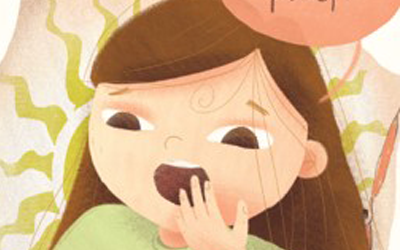Night terrors are a sleep phenomenon that occur during sleep mainly in young children. A child with night terrors will usually scream and look very nervous or scared. During the episode, the child may appear confused or sleepy, may mumble or give irrelevant answers to questions. He can also push you, walk or act strangely. Although night terrors are very “dramatic” and can cause great distress to parents, children are often not aware of what they are doing and do not remember anything. Although the child appears to be awake, he is actually in a deep sleep.
Night terrors usually occur between 5 and 10 minutes, but sometimes for longer periods of time. It is important to note that children have no memory of these events. The most difficult thing for parents is the inability to calm the child during the event. In fact, attempts to calm down the child may only worsen and increase the intensity of the episode. Night terrors are not nightmares and the child does not dream during the event. It is important to note that night terrors are not a sign of a psychological or psychiatric problem and they also do not cause psychological damage to the child.
Night terrors usually occur about an hour or two after falling asleep, when the child is in the deep sleep phase. Night terrors are more common among young children. In most children, this phenomenon disappears by the beginning of puberty. A child with night terrors usually has a family history of this or related phenomenon like confusional arousals, sleep walking or sleep talking.
The chance of night terror is higher in a child who does not sleep enough or whose sleep is disturbed, for example:
1. Irregular time of going to sleep
2. Presence of another sleep disorder such as sleep breathing disorder
3. Fever, illness
4. Taking certain medication
5. Sleeping in different places
6. Stress and tension
What can be done when my child has a night terror or to reduce the chance of its occurrence:
1. Keep your child safe. Although many children with night terrors stay in bed,
many children with night-terrors walk in their sleep. Therefore, if there is such
behavior, it is necessary to organize in such a way as to keep the child safe (for
example, locking doors, windows, or putting up a gate)
2. Do not try to wake up your child during such an event – it can only make his
reaction worse
3. Avoid trying to react, stand next to the child, in case he gets up from the bed try
to return gently
4. Make sure the child sleeps enough
5. Maintain a more or less constant bedtime
6. Look for signs of other sleep problems: does the child have difficulty falling
asleep, does the child get up many times at night, does the child snore, is the
child tired and sleepy during the day?
7. Is the child irritable and unfocused during the day? In case there is a suspicion
of additional sleep problems, you should consult a professional
8. The phenomenon should not be discussed with the child the next day
9. In most cases, no special treatment is needed when there are night terrors,
however, in cases where the frequency is high, the intensity of the events is
high and there is a fear of injury, you should contact a health care professional
that specializes in sleep
For our picture book that helps children and parents learn how to improve sleep click here




0 Comments